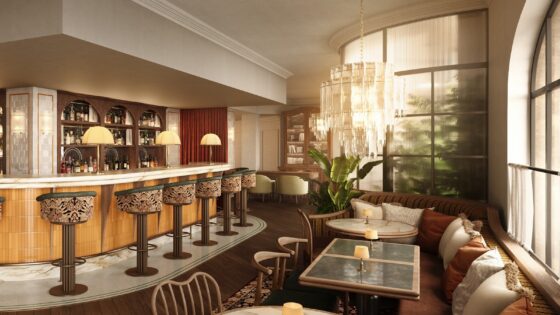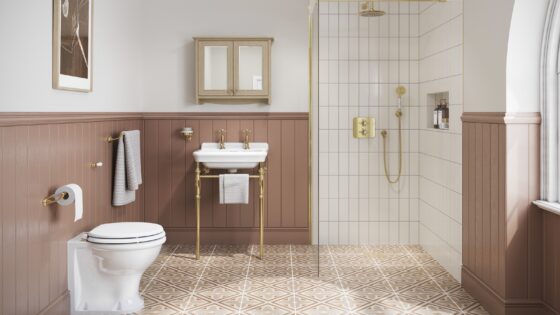Sophie Armstrong from Burlington Granite explains how to create a warm, inviting and practical hotel dining experience…
As the place your guests start each day, the dining room is the heart and soul of any hotel, playing a pivotal role in the overall guest experience. As such, optimising your hotel dining room for efficiency, aestheticism and functionality can have a significantly positive impact on business. So today, we’ll break down exactly how you can achieve this in your hotel, ensuring your guests leave breakfast, lunch or dinner with a full stomach and a smile.
Consider your room layout
The floorplan is the fundamental principle to be considered when optimising any hotel dining space, as it ultimately affects the entire dining experience.
Although the utilisation of a multi-room layout may seem like a great way to accommodate extra guests, a singular open-room layout is our top pick for your floor space plan. Not only does it make life easier for your servers, but it often generates a better atmosphere that really gives your hotel dining space life.
“When considering what dining furniture best suits your hotel dining space, reflect on what type of establishment you’re running.”
If you offer a continental breakfast service, ensure your counter is central to the overall floor plan to create an easy self-service experience. Use a durable granite worktop surface to keep your dining room looking contemporary and clean, while simultaneously providing a simple and hassle-free clean-up once breakfast is done.
If your dining room has a bar, make sure this is set aside from the hustle and bustle of service. This will accommodate those guests who simply want to relax with a drink, ensuring they still have an enjoyable experience regardless of the space’s primary purpose, and perhaps enticing them to stay for another one – or three!
Choose the furniture that reflects your brand
When considering what dining furniture best suits your hotel dining space, reflect on what type of establishment you’re running – are you offering a fine dining or casual dining experience? Purchase your furniture accordingly, ensuring you buy commercially regardless of service type to guarantee furniture that can withstand the wear and tear of everyday use.
Choose materials that match the colour and patterns of your interior decor to maintain consistent branding from the bedrooms to the bar and dining room, ensuring that the fabrics are stain-resistant and can easily be wiped down and cleaned for quality sanitation. Striking the balance between branding and practicality is crucial here, so ensure you don’t sacrifice one for the other.
Consider logistics
You have plenty of options when it comes to shapes and sizes of furniture, so it’s important to carefully consider what options work best for your space. First, you should think about the kinds of guest that you accommodate at your hotel. If your clientele is primarily families, you’ll need a range of different sized tables so they have plenty of choices; provide tables with four, six and eight seats so that groups have options. Alternatively, if your lobby sees many business travellers, then opt for mostly two-seaters with some larger tables for the groups that do come through.
For breakfast, think about incorporating round tables into your dining room layout to encourage socialising during the morning rush. During the evening, square tables work best for space-efficiency and table turnover. Ultimately, though, it’s a good idea to mix table sizes to ensure you can cater for everyone, from the lone guest to the large family, with plenty of two-person tables to easily shift around table layouts when required.
By optimising your hotel dining space, you’ll improve the experience of your guests and, as a result, boost the profits of your business by creating repeat custom. Following this advice will help will help you create the best hotel dining space for guests to enjoy breakfast, lunch and dinner every day.




